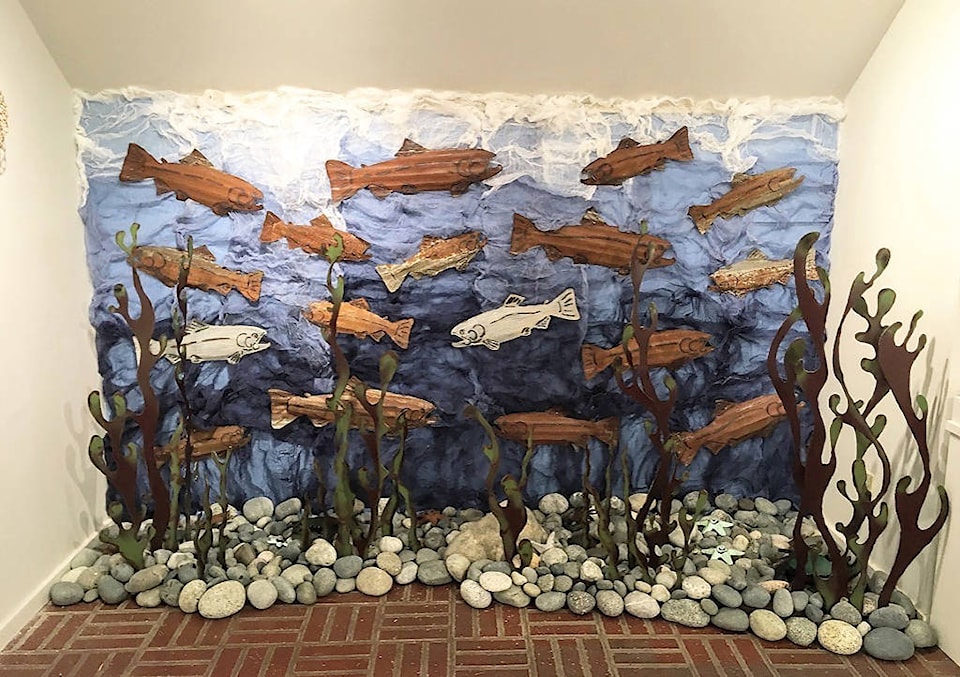The Sooke Region Museum opened its annual temporary exhibit on June 25.
This year the exhibit is called Seeking Salmon. Open until next spring, this exhibit demonstrates the significance of salmon to the Sooke Region.
The exhibit includes information on salmon enhancement, healthy streams, food preparation, First Nations and fishing. Additionally, there’s material on species identification and a salmon’s life cycle.
Visitors will quickly notice that human impact is the greatest factor affecting the population of salmon and the health of their habitats. This exhibit shows how the Sooke Salmon Enhancement Society and other dedicated locals are determined to see the population of salmon increase. Several tips on how to reduce the human impact and support healthy ecosystems are offered.
The First Nations portion of the exhibit goes into detail about traditional methods of fishing and preparing the salmon to eat. The spiritual significance of salmon is also touched on as well as inspired songs, stories and legends.
A key component of the exhibit is the ocean scene we created. This scene started as a simple drawing and flourished into a whimsical design brought to life by the creativity of our curatorial staff.
The scene shows salmon swimming through the ocean surrounded by seaweed and other sea creatures such as crab and starfish. The ocean water was created using cheese cloth that we dyed using a gradient effect; then, we stiffened the fabric using a white glue solution. The seaweed was made by local blacksmith Ryan Fogarty and the salmon and creatures were made by Kastawayz Art. The metal art pieces in this display, and also the First Nations carvings, are for sale and will be available for pick up at the end of the exhibit.
Also included are two hands-on features that engage visitors. One is a comment section on a structure modelled after a traditional salmon drying rack. We constructed the drying rack using branches found around the museum grounds. Visitors are asked to write a comment on the pieces of paper cut out in the shape of a salmon; then they attach the salmon to the drying rack.
The other hands-on feature is a game that tests your knowledge on the information presented in the exhibit. This game is especially fun for kids as they can hunt for the answers.
•••
Brianna Shambrook is the collections and exhibits manager for Sooke Region Museum.
